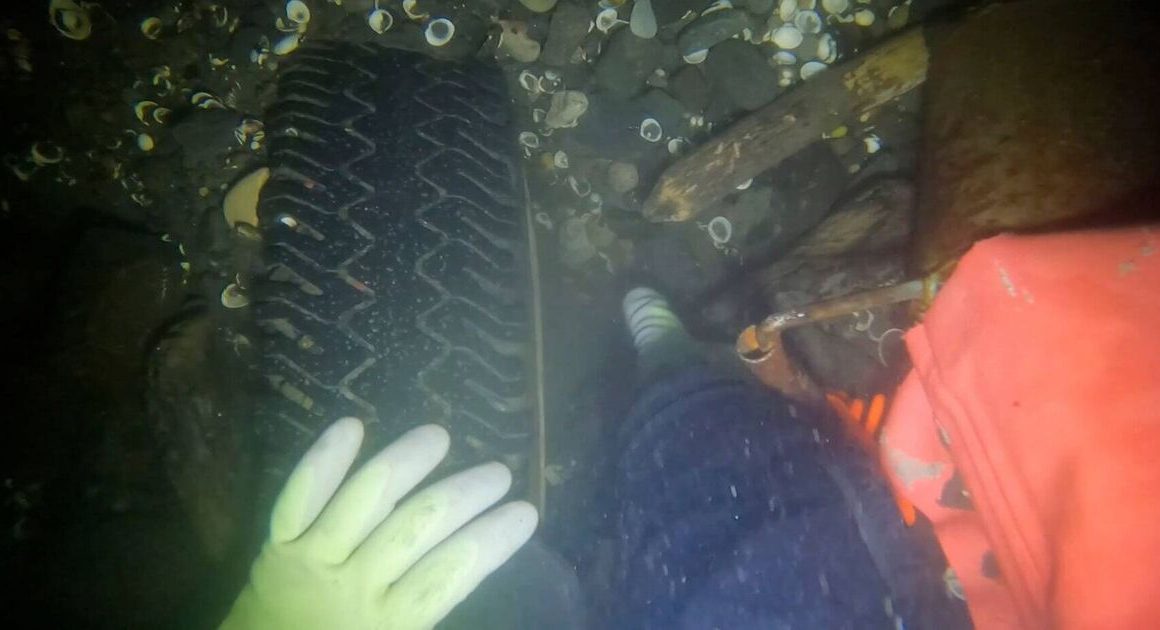As It Happens6:29Biodiversity is a lot like Jenga, says Canadian artist behind COP16 installation
Canadian artist Benjamin Von Wong deals in metaphors. And the best metaphor for biodiversity, he says, is the game of Jenga.
There are so many different kinds of life on our planet, and they’re all interconnected. You pull one block out, and the tower starts to wobble. You remove enough of them, and the whole thing falls apart.
“All these blocks depend on each other for stability,” Von Wong told As It Happens host Nil Kӧksal.
Von Wong is the artist behind Biodiversity Jenga, a six-metre-tall art installation currently looming over COP16, the United Nations biodiversity conference, in Cali, Colombia.
It’s made of hollow wooden blocks, arranged like a Jenga tower, each containing dioramas of different ecosystems, from tropical jungles to kelp forests.
Each ecosystem is inhabited by tiny animal sculptures crafted by 200 young students from the Luis Madina and Santa Librada schools in Cali.
Atop the tower sit sculptures of three children, created by Colombian artist Raizha Guzman.
“These kids actually have no mouths because they represent sort of not just the next generation, but every generation to come, and they don’t really have a voice yet. And so they’re depending on us to find ways of stabilizing this Jenga tower,” Von Wong said.
“Because unlike a game of Jenga, which is a zero-sum game where you pull blocks out until the entire tower collapses, the game of biodiversity is one in which we can put blocks back in.”

It’s that message of hope that Von Wong hopes to convey to COP16 delegates working to address global biodiversity loss.
Up to one million species are threatened with extinction, many within decades, according to a 2019 United Nations report.
Migratory species, including many birds and fish, are particularly vulnerable to habitat loss. Overall, more than one in five migratory species listed in a UN report released this year are threatened with extinction, and 44 per cent have a decreasing population.

Two years ago, at COP15 in Montreal, nearly 200 countries signed a landmark agreement to reverse the loss of nature by the end of the decade and raise $700 billion US a year to achieve that goal.
Part of the work of this year’s conference is to see how far along each country is in meeting its goals.
More than 250 artistic collaborators
It’s the kind of work that requires a lot of collaboration — not unlike Biodiversity Jenga, which more than 250 people worked on.
Von Wong, a Toronto-born artist who lives in New York City, designed the installation. Colombian architect Jonny Edmonds and his team constructed it.
Colombian landscape designer Milton Duarte created the ecosystems, while Colombian artist Sasha Herrera created six dioramas showcasing the leading causes of biodiversity loss.

And, of course, there are the kids who made the installation’s animal inhabitants.
“Kids have a little bit of an understanding of what’s happening, but it’s not necessarily expressed through the intellectual way that we think about it,” Von Wong said.
“I think it’s expressed through an excitement and a love for nature that they can’t comprehend quite yet that is currently disappearing.”
Von Wong is known for creating art installations with environmental themes, including a massive sculpture built from plastic pollution, and a thermometer that represents the threat of a warming climate.
He says doesn’t think art alone can fix these problems. But he hopes it can give people a new way of thinking about and discussing them.

Already, he says he’s heard from one COP16 delegate that Biodiversity Jenga is having an impact behind closed doors.
“I was just lamenting how it was really impossible to know what people’s reactions are, and this guy was saying, ‘Well, if this is helpful, I was at a high-level conversation where a bunch of delegates … were using the metaphor of Jenga, talking about how important it was for us to put blocks back in,'” Von Wong said.
“And I was like, how cool is it that we’re … taking the language of the art itself and integrating it into these high-level discussions? And so I think the value of symbols cannot be understated.”










